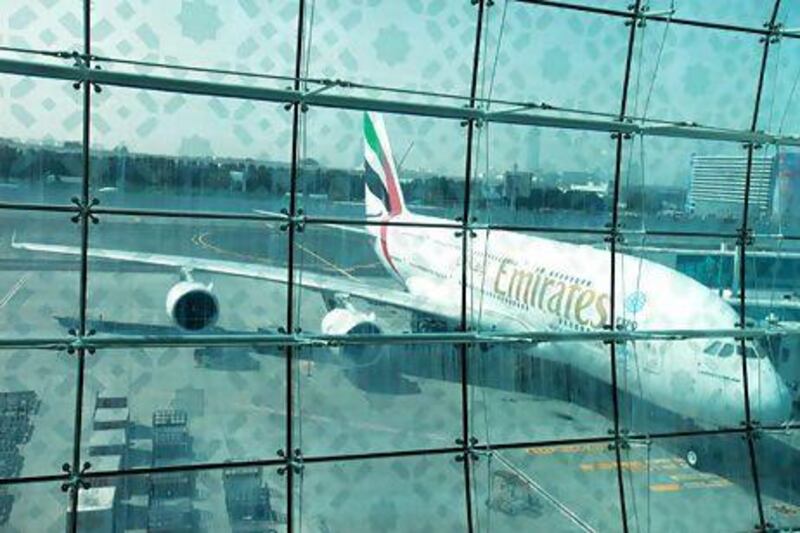Arabian Gulf airports will be handling up to quarter of a billion passengers a year by 2020 and Dubai will become the world's busiest airport by 2015, according to a study published for the Airport Show and Global Airport Leaders' Forum, due to take place in Dubai next month.
Titled "The World via the Gulf", the study pulls together research from bodies including the United Nations' International Civil Aviation Organization (Icao), the International Air Transport Association (Iata), the IMF and the UAE's General Civil Aviation Authority to show the region's increasing role as a global aviation hub.
By 2020 Emirates Airline, Qatar Airways, and Etihad Airways will have the capacity to carry nearly 200 million passengers - four times their current capacity, the survey said. Dubai, Doha, and Abu Dhabi airports will reach an annual capacity of 190 million passengers, and by 2025 seven billion people will be within reach via a single flight, while the total aircraft movements in the region will reach 2.3 million.
The study details how Iata has estimated that the Middle East will have the third- fastest passenger growth rate in the world by 2016, and that Icao expects air traffic in the region to grow 5.2 per cent annually until 2030, compared with the world average of 4.6 per cent.
Icao also predicts that to meet the rise in passenger traffic, Middle East airlines will lift their capacity by 12.8 per cent this year.
"The world is literally going to pass through the Gulf in the coming years, given increasing air connectivity and expanding airports infrastructure," said Daniyal Qureshi, the director for the Airport Show.
"The aviation sector was fast to realise the potential that the GCC's privileged location holds. With almost two billion people within 2.5 hours reach by air, the region has a unique geographical advantage that can fuel not only the sector, but the local economies in general," he added.
Oxford Economics, the United Kingdom-based economic consultancy, said aviation's direct contribution to GDP in the region would increase by 6.3 per cent per annum in real terms over the next 20 years, creating an additional 294,000 jobs.
Tony Tyler, the director general and chief executive of Iata, explains in the study how aviation has taken centre stage in the economic development of the Gulf region. "Governments here understand the power of connectivity to drive economies", he said. "And with this understanding governments have created a business-friendly environment for air transport with low taxes and world-class infrastructure."
According to the General Civil Aviation Authority's Strategic Plan 2012-16, UAE airports are investing up to US$50 billion over the next 15 years and the combined fleets of airlines in the country are projected to grow to 425 aircraft by next year, up from a total of just 95 aircraft 10 years ago.
Emirates, Etihad and Qatar Airways hold one third of the global orders for Boeing 777 and Airbus A380 aircraft.
With a current fleet of 31 A380s and a further 59 on order, Emirates is the world's largest operator of this type of aircraft.
The total aircraft movements to, from and within the Middle East region are estimated to increase to 2.35 million in 2025, an average annual growth rate of 7.6 per cent.
"The Middle East remains one of the world's most robust aviation regions and this is confirmed by a 200 per cent increase in inter-regional passenger traffic over the last 10 years," said the Oxford study.
"Passenger traffic in the GCC has grown at an annual rate of 10 per cent between 2002 and 2010, significantly higher than global traffic growth in the same period of between 1 and 3 per cent."





